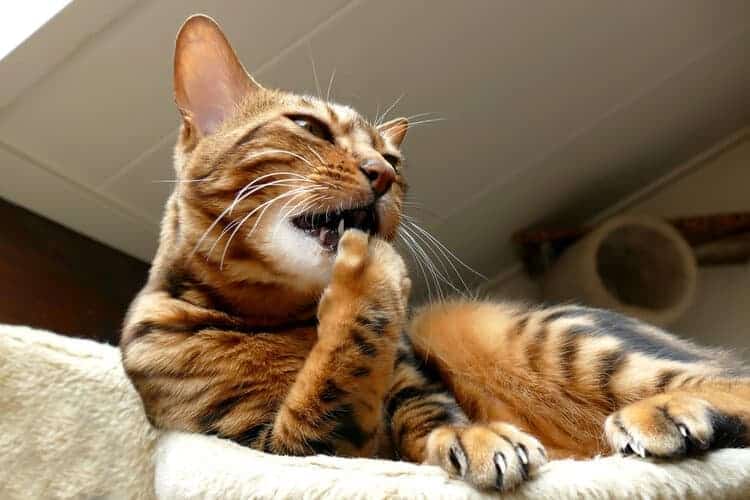Imagine spending half of your waking hours in the shower every single day. While that might seem exceedingly boring and tedious to us, cats spend approximately 2–5 hours grooming themselves every day, which is between 30% and 50% of their waking hours. For an owner who sleeps for 8 hours each night, they’d have to shower between 4 and 8 hours a day to keep up with their tidy cat! So, why are felines so meticulous about their hygiene? Continue reading to learn more!

How and Why Do Cats Groom Themselves?
Although cats don’t speak words (at least ones that we understand), they have solidly built tongues, which are used for grooming and regulating their body temperature.
When cats groom themselves, they lick their fur with their barbed tongue, which acts like a wet brush. Not only does this wash off dirt, but their saliva also cools them off, since cats don’t sweat the same way that humans do. Cats also tend to lick their paws before using them to comb through their hair. Their paws act like a wet washcloth in this instance, simultaneously smoothing, cleaning, and distributing oils across their fur.
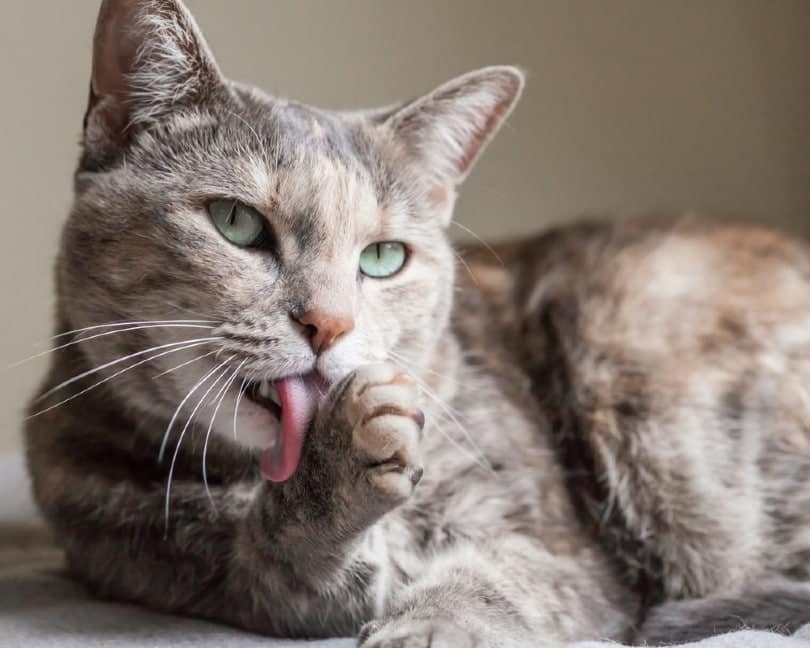
When Your Cat May Be Cleaning Too Much
If your cat is cleaning obsessively—for over half of their waking hours—they might be grooming too often. Your cat can damage their health by cleaning too frequently. Typically, this will result in bald spots or too many hairballs. Common reasons for obsessive grooming include the following.
1. Fleas
These tiny pests are always a nuisance, but did you know your cat can be allergic to flea bites? Like bee stings in humans, flea bites are never good, but the severity of your cat’s reaction will depend on the individual feline. If your cat chews and licks excessively around the base of their tail, check their fur for fleas. Most flea-related issues will be the worst around the tail area.
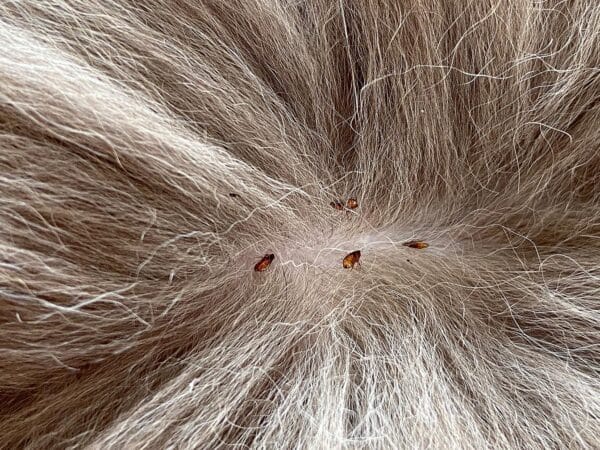
2. Allergies
The affected location of the body will depend on the allergy in question. If your cat is allergic to fleas, look for irritation around the base of their tail. If it’s ear mites, you’ll probably notice hair loss around their head and ears. They might also be shaking their head a lot more often than normal. If they’re allergic to pollen, you’ll find hair loss around their paws where they’ve been licking their feet too much.
3. Pain
Your cat could be grooming themselves too often because they’re in pain. Check your cat for injuries to make sure they’re not trying to give themselves first aid.
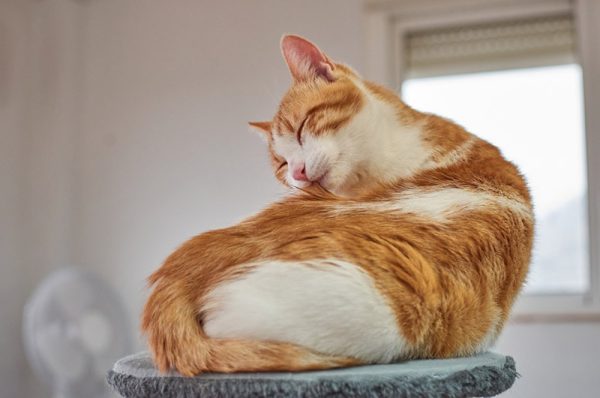
4. Stress
Excessive grooming is one way your cat might be managing stress, such as environmental changes or a new family member. Like chewing fingernails in humans, cats can use frequent licking as a therapeutic (though harmful) coping mechanism. If your cat is stressed out, they’ll often display other signs, such as shaking, overeating, withdrawing from company if they normally like humans, hissing, growling, and acting fearful or restless.
How to Prevent Your Cat From Over-Grooming
Monitoring your cat’s routine will help you distinguish normal from abnormal behavior for them. Brushing your cat’s fur often will prevent mats and a surplus of hairballs from forming (and reduce the amount of cat fur flying around your house). Keeping your home free of fleas and other pests will help your pet not itch so much, and maintaining a calm environment will reduce the stress levels in your cat, which can contribute to harmful behaviors.
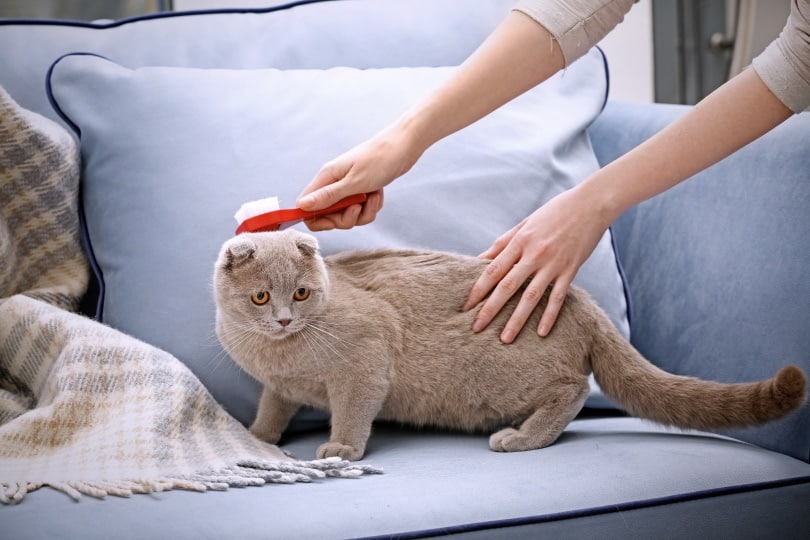
What to Do If Your Cat Doesn’t Bathe Frequently Enough
You might have noticed that your cat isn’t bathing themselves as often as they should be, or maybe their skin is oily or has fleas. If that’s the case, you might have to be the one to bathe your cat to make sure they stay healthy and clean. Just ensure to always use a shampoo formulated for cats. The pH level of their skin is different from ours, and even shampoos made for dogs can contain ingredients that might be harmful to them.
There are lots of pet shampoos to choose from, but some are much better than others. We love these two options by Hepper made with all-natural ingredients that gently clean your pet's skin and coat. These pH-balanced formulas contains moisturizing aloe vera and colloidal oatmeal, and it's free of dyes, phthalates, sulfates, and other irritants. At Catster, we’ve admired Hepper for many years and decided to take a controlling ownership interest so that we could benefit from the outstanding designs of this cool cat company!
A lack of grooming can also be a sign of medical health issues. For example, arthritic cats cannot groom themselves properly due to pain, and cats with pain from dental issues also tend to reduce or stop their grooming. If your cat is not grooming as usual and you have noticed behavioral changes, such as reduced appetite or lower energy levels, it is better to err on the side of caution and get the cat checked by the vet.
Conclusion
Cats are fairly grooming obsessed, spending up to half of their waking hours licking and combing through their fur. If you notice that they spend most of their time grooming, however, that might be a sign they have fleas, injuries, or allergies. Keeping a loving eye on your pet will help you look for behavior cues that something might be wrong.
Featured Image Credit: Ilona Koeleman, Shutterstock

